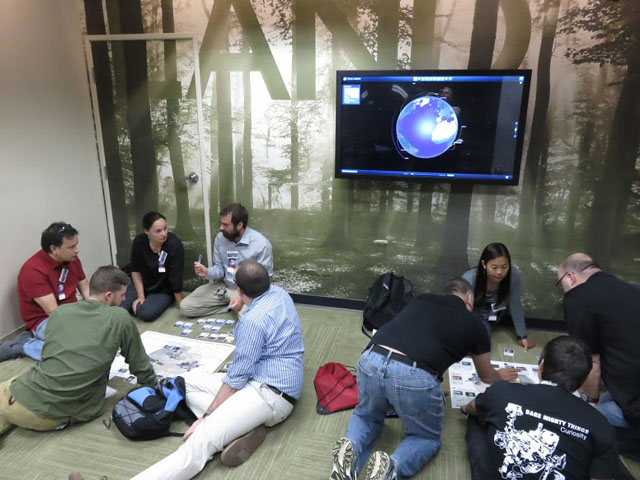CSUN Fosters STEM Education Through JPL Collaboration, Texas State University Grant
To some, science, technology, engineering and mathematics (STEM) fields are a bit too hairy to cross over to from the humanities. For others, STEM education is a dream that is just out of reach.
At California State University, Northridge, education professors Norm Herr and Susan Belgrad are making STEM career paths for the future a dream come true by educating one teacher at a time.
Through its partnership with Jet Propulsion Laboratories (JPL) and part of a five-year, $200,000 grant from Texas State University and NASA, CSUN is providing the Michael D. Eisner College of Education summer education summits on campus, where student teachers can practice educating K-12 students on STEM subjects.
Belgrad enthusiastically discussed the possibilities of what the JPL partnership and grant could do for student teachers going into schools with traditionally underserved communities, including those in the Los Angeles Unified School District.
“Many of the scientists and engineers we met said that missions begin as a sparky idea written on a napkin, but it does involve a lot of hard work,” Belgrad said. “We talked about how we can position a curriculum instruction and even attitudes and cultures in classrooms so that it addresses and respects the diversity of the students – especially women in STEM and underserved students in the Latino communities.”
Belgrad and Herr take 30 CSUN STEM education graduate students to JPL each summer for a learning summit through a $45,000 grant from NASA and JPL.
JPL education specialist Sandra Kaszynski said the summit helps spark curiosity and foster understanding of the STEM fields.
“Teachers are learning and growing as I am learning and growing,” Kaszynski said. “I go all over the Los Angeles area and try to bring STEM content to teachers, and particularly the ‘E’ in STEM, because engineering is scary for them. They don’t really know what it is. When they find out that it is basically teamwork and solving problems together and building something for the better, they realize that is what engineers do.”
Belgrad agreed that when teachers have a better understanding of STEM, they are more excited to teach it in the classroom.
“We are pressing the envelope in utilizing resources such as we have at JPL and the programs they offer so that our teachers are getting this Next Generation Science Standards exposure early on,” she said. “So, when [the teachers] experience this directly, they become very engaged and very excited. And their students begin to understand how incredible science is.”
The Next Generation Science Standards were created by a national collaborative of educators to make STEM education more cohesive and hands-on in the classroom.
Belgrad explained it is a vital time for the country to grow STEM careers, as the national economy is building more science and engineering jobs.
“Ultimately, it is an economic issue,” she said. “We need more STEM careers that are so important to our nation’s future prosperity. We are working with JPL to get more faculty across the university that are aware of the difficulties for minorities to access STEM majors.
“Secondly, we are dealing across the board with issues of equity and the potential of democracy. Accessibility to college majors in STEM begins early. I, as an elementary educator, believe we need to bring [students] in as early as K-3 toward STEM.”
For Kaszynski, being able to educate future teachers at JPL on STEM for K-12 is exciting for the future.
“Every day you get to truly learn something new,” she said. “It’s being someplace where problems are being solved that we never knew were even problems. Teachers are wonderful people to work with because they are curious and generally happy.”




 experience
experience